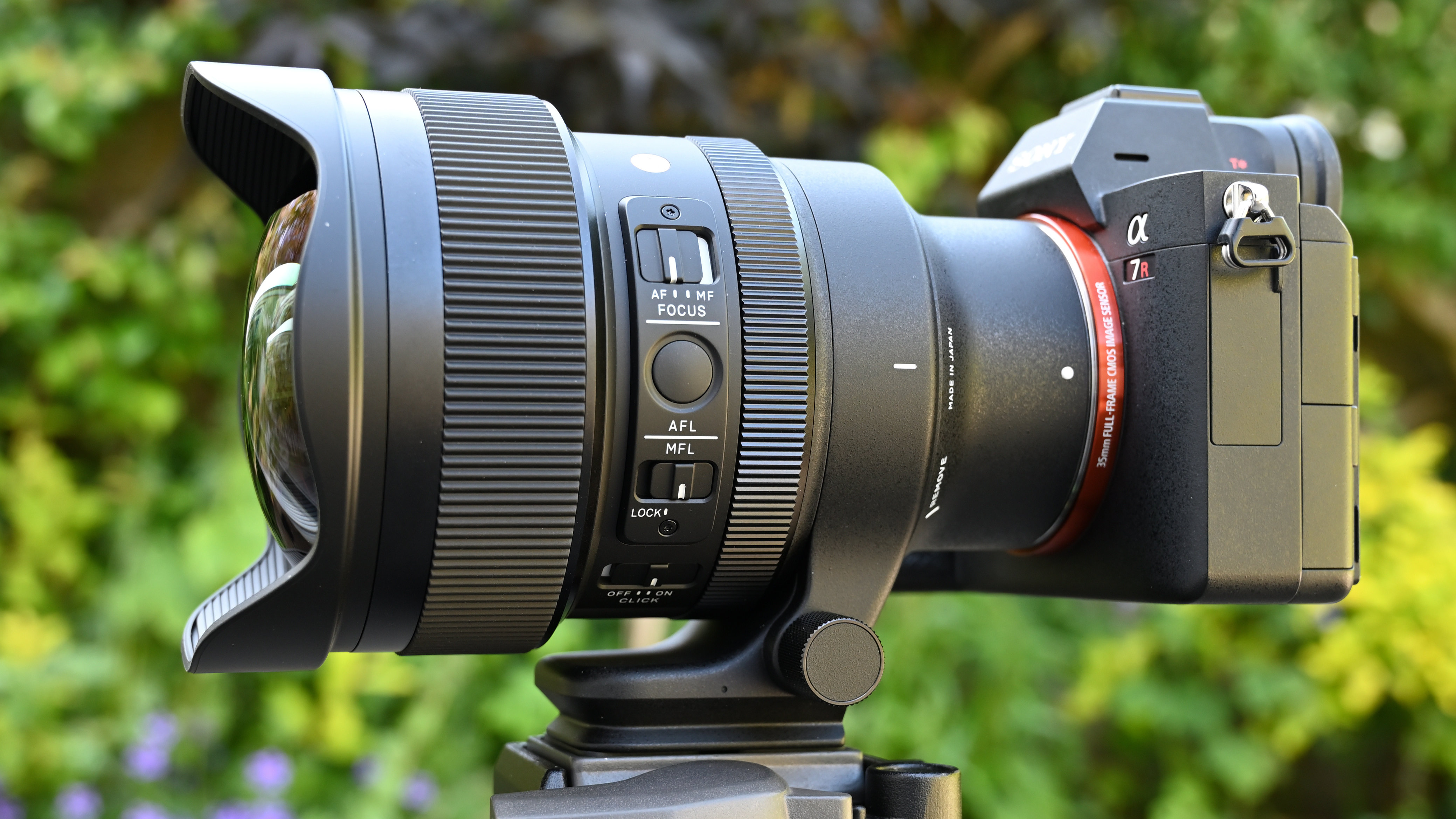
Building the Sigma 14mm F1.4 DG DN Art was a bold move. There’s already a very good Sigma 14mm F1.8 DG HSM Art lens on the market, which was originally designed for Canon and Nikon DSLRs and subsequently repurposed for Sony and L-mount mirrorless cameras. And if you’re in the Sony camp, there’s also the thoroughly excellent Sony FE 14mm F1.8 G Master lens.
The new Sigma focuses primarily on astrophotography, where the brighter f/1.4 aperture pays dividends. Even so, it’s designed to be a high-performance ultra-wide-angle lens that’s entirely suitable for any scenario from landscapes and cityscapes to weddings and architectural interiors, and any time you simply want an expansive field of view.
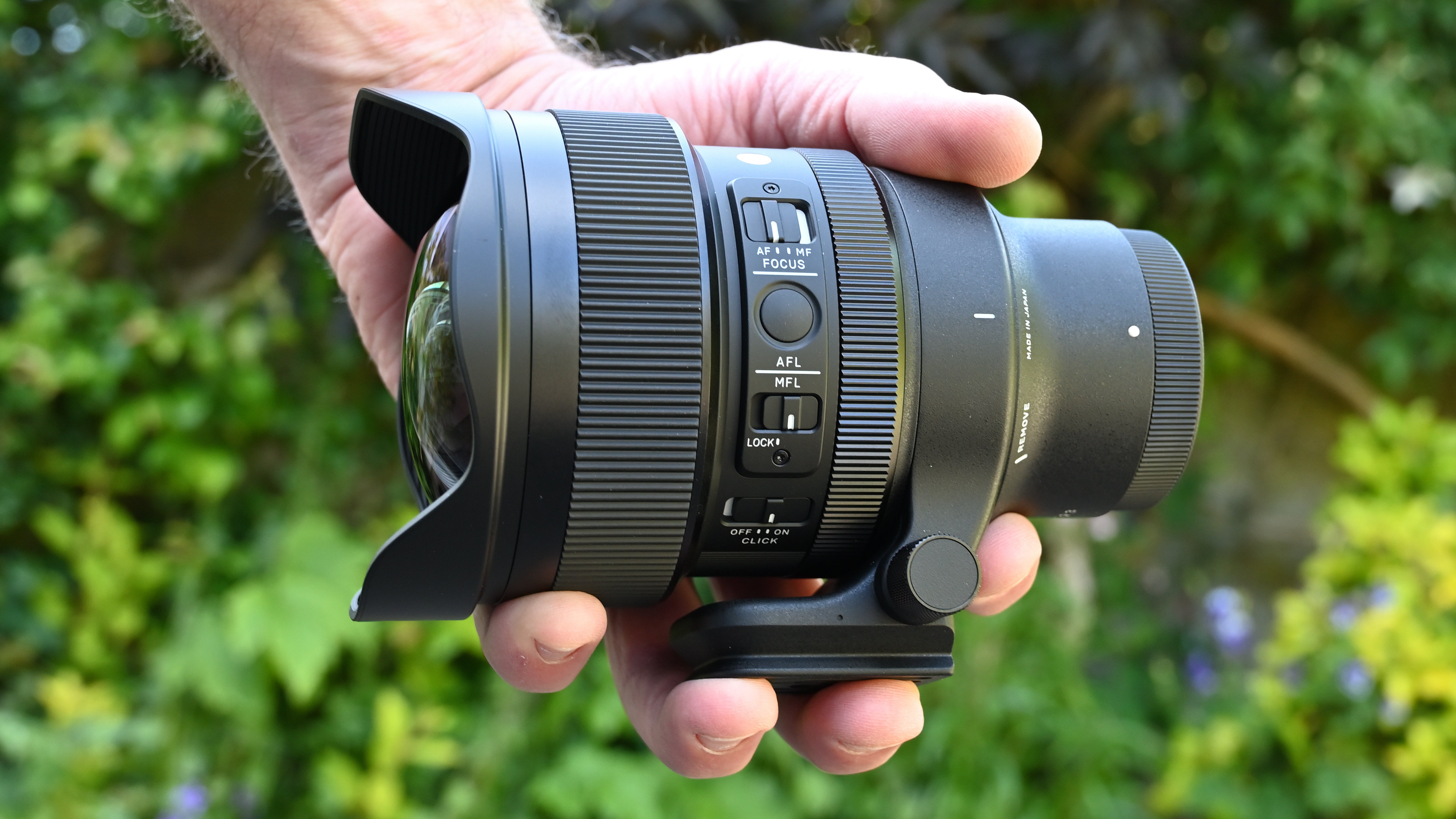
Surprisingly, the Sigma pretty much matches the two slower f/1.8 lenses for purchase price but, by necessity, has a bigger and weightier build. Indeed, it’s physically wider and 50 per cent longer than Sigma’s DSLR lens. It’s also more than twice the weight of the Sony f/1.8 lens, at 1,170g compared with just 460g. That’s the cost of the extra two-thirds of an f-stop in aperture brightness.
Specifications
Mount: Sony E (FE), Leica L
Full frame: Yes
Autofocus: Yes
Image stabilization: No
Lens construction: 19 elements in 15 groups
Angle of view: 114.2 degrees
Diaphragm blades: 11
Minimum aperture: f/16
Minimum focusing distance: 0.3mm
Maximum magnification ratio: 0.08x
Filter size: Rear gel slot
Dimensions: 101x150mm
Weight: 1,170g
Key features
This Sigma is certainly rich in features. Let’s start with glass. The optical line-up features no less than 19 elements in 15 groups. These include an SLD (Special Low Dispersion) element, three top-grade FLD (‘Fluorite’ Low Dispersion) elements and four aspherical elements. Taking astrophotography very much into account, the overall optical design aims to maximize sharpness across the whole image frame while minimizing sagittal coma flare, so that bright points of light don’t take on blurred or irregular shapes, even towards the edges and corners of the frame.
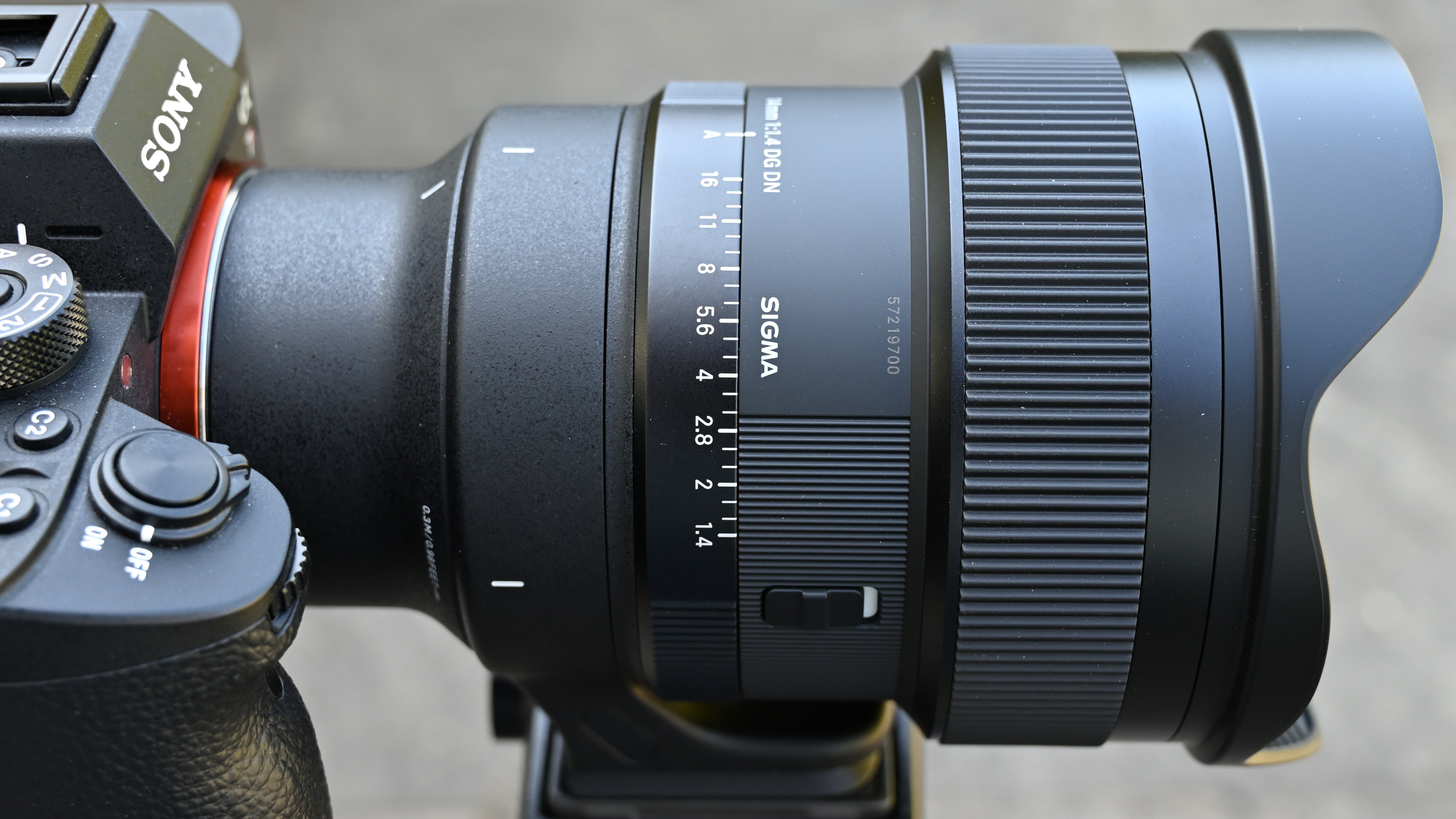
Autofocus is driven by Sigma’s latest High-response Linear Actuator (HLA) breed of motor, which aims to give faster performance for stills and smoother transitions for video, while also being virtually silent in operation. A customizable AF-Lock button is featured on the barrel, as well as a manual focus lock switch, which we’ll come back to later.
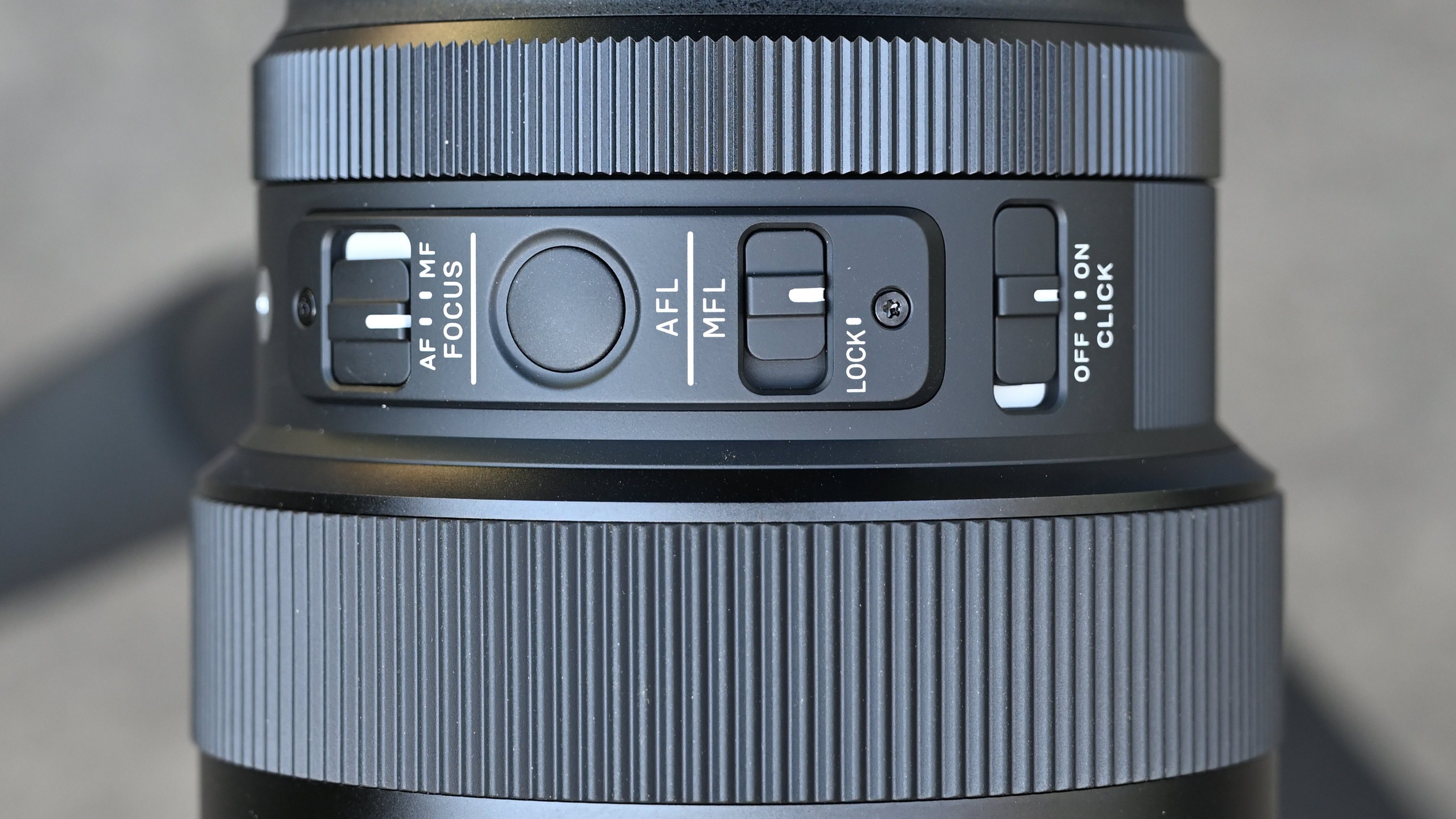
As you’d expect, there’s full compatibility for controlling the aperture from the host camera body in PASM shooting modes, but the lens also features an onboard aperture control ring. What’s more, it comes with click steps of one-third f/stop increments and a de-click switch for stepless adjustments when shooting video.

As with most ultra-wide angle lenses, the Sigma has an integral petal-shaped filter that can’t be removed. Not just for shielding the lens from light entering at oblique angles, it also gives physical protection to the protruding front element. At the back end, there’s a gel filter slot built into the mounting plate.
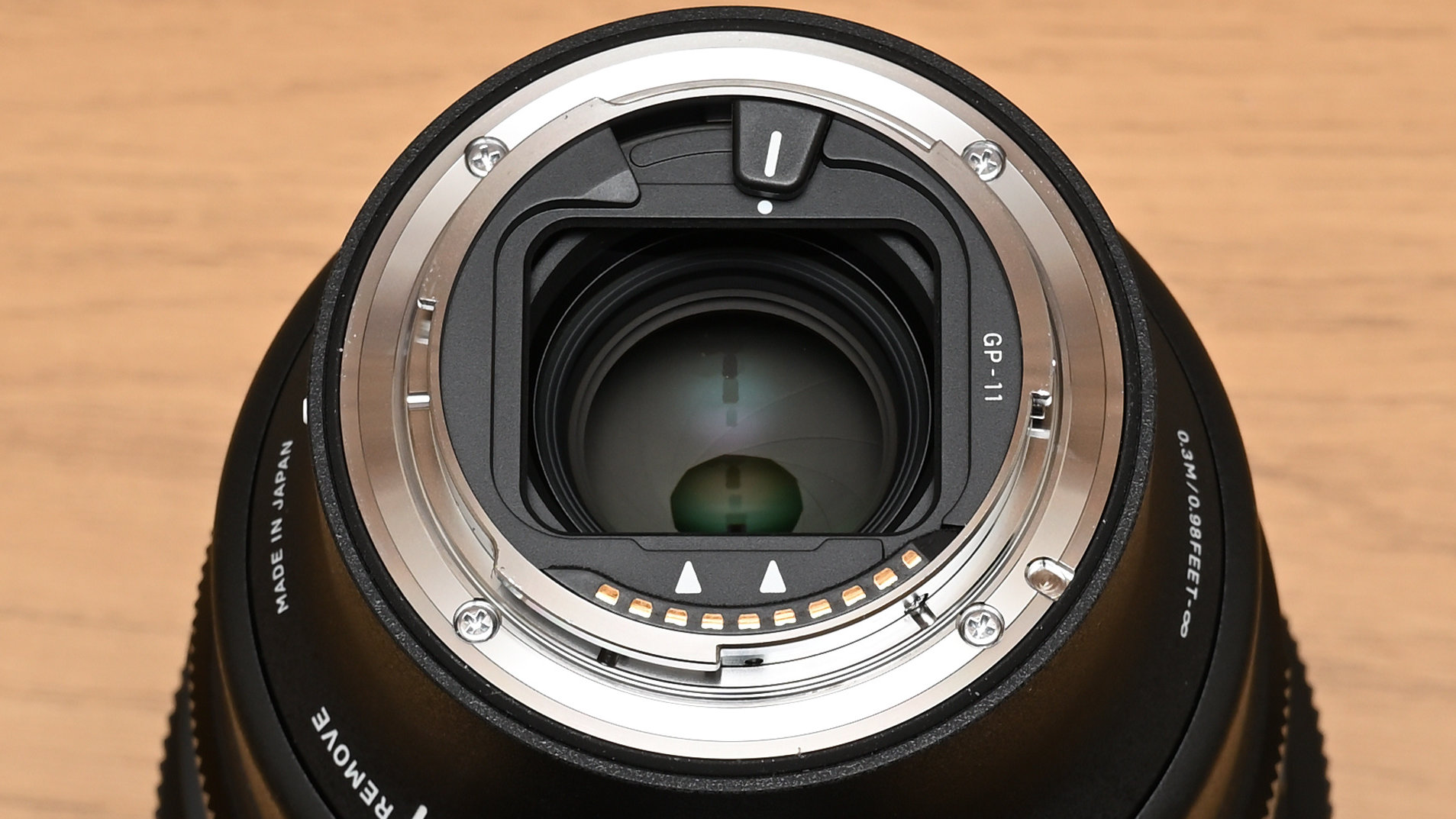
A neat touch is that the front lens cap has two built-in compartments for storing gel filters. A smart feature that’s well suited to astrophotography is that the lens has a heat strip retaining mechanism, to keep it in place and avoid any build-up of condensation when night-time temperatures drop.
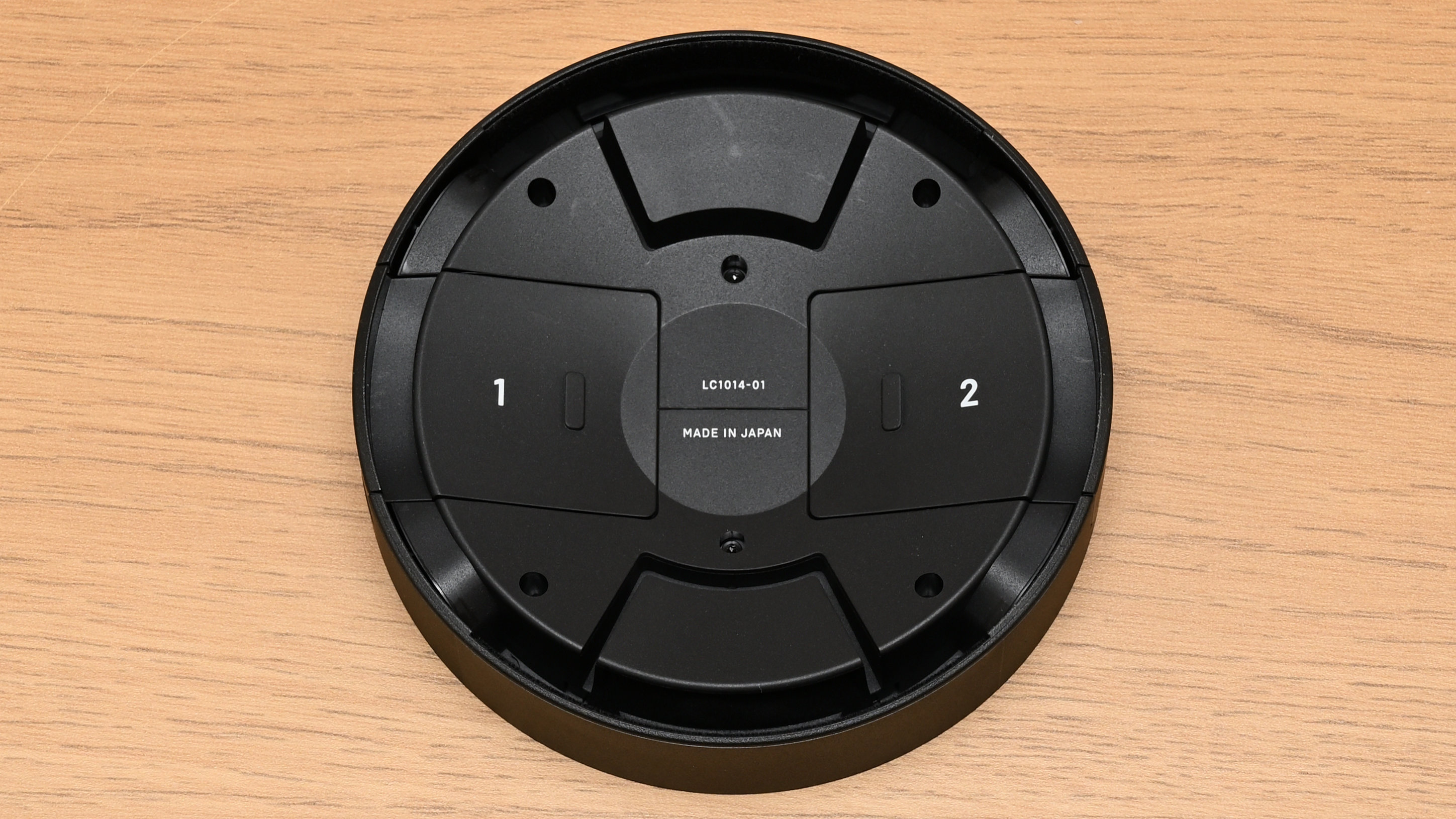
Build and handling
Build quality feels of an entirely pro-grade standard. The construction includes a brass mounting plate and multiple weather-seals, as well as a fluorine coating on the front element to repel moisture and grease, and to aid easy cleaning. Sigma’s Super Multi Layer Coating is also applied to reduce ghosting and flare.
Weighing 1,170g, the lens doesn’t absolutely need a tripod mounting ring but one is supplied anyway, and comes complete with an Arca-Swiss compatible foot. It’s particularly useful for keeping a good balance when using a tripod or monopod with the camera in portrait orientation mode. If you’re rather not use the mounting ring, it’s easily removable and a rubber band is also supplied which you can fit in its place, to enhance handheld handling, so to speak.
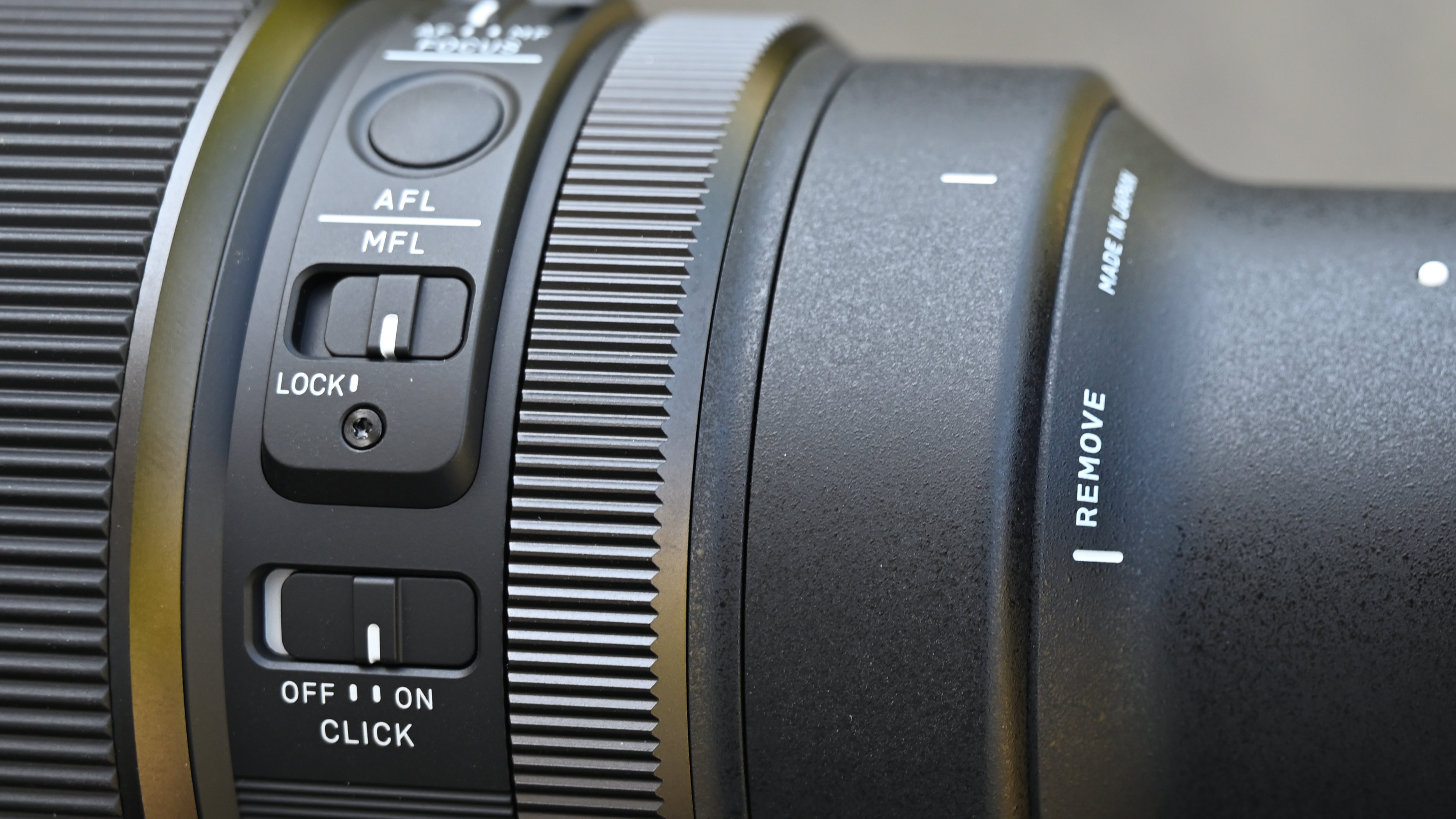
The manual focus locking switch that we mentioned earlier is particularly useful for astrophotography. It enables you to manually focus the lens to infinity and then disengage the focus ring completely, so that the focus setting won’t be affected if you nudge the focus ring accidentally. The same goes for the aperture control ring. Many recent lenses that feature this are notorious for the ring being nudged accidentally from the Auto setting to a narrow aperture, but the Sigma features a locking switch to avoid the problem.

Performance
In our real-world tests, we found that sharpness proved highly impressive across the entire image frame, even when shooting wide-open at f/1.4. That’s no mean feat for such an ultra-wide-angle lens. True to its claims, the Sigma also keeps sagittal coma flare to very low levels, and the same goes for axial chromatic aberration or ‘bokeh fringing’, which is also a challenge for ‘fast’ lenses.
Lateral chromatic aberration is entirely negligible even at the extreme edges and corners of the frame, the lens beating both of the Sigma and Sony 14mm f/1.8 lenses in this respect. It might sound strange to talk about bokeh in a 14mm lens, but the f/1.4 aperture enables quite a tight depth of field for close-ups, thanks to a short minimum focus distance of just 30cm, or about a foot. Bear in mind, that’s measured from the image sensor at the rear of the camera, rather than from the front of the lens, so you really can get in close. Bokeh is nice and smooth wide-open and remains very good when stopping down a little, helped by a particularly well-rounded 11-blade aperture.
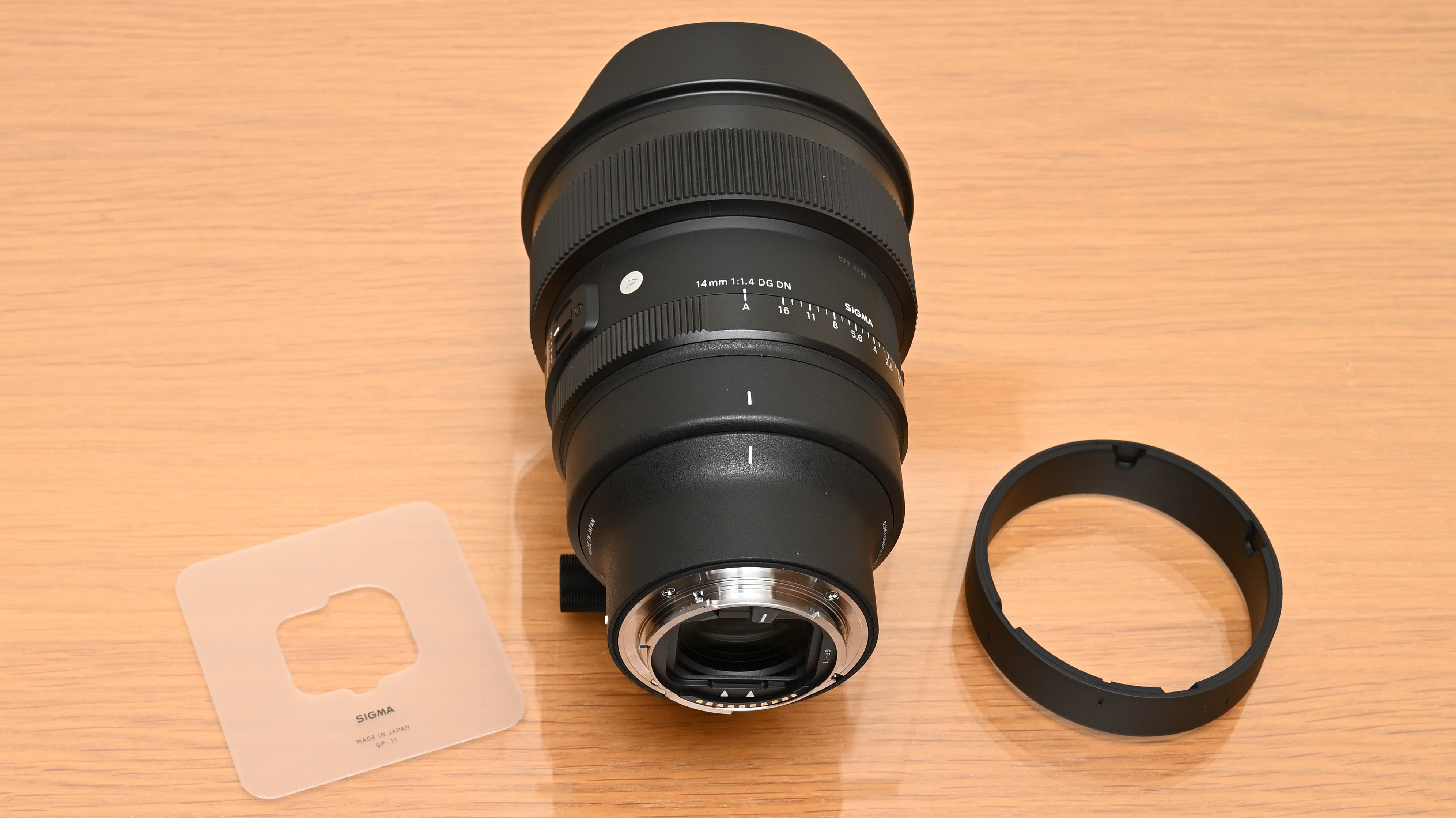
Autofocus is super-fast and entirely reliable. All in all, the performance of this Sigma lens is absolutely excellent.
Sample images







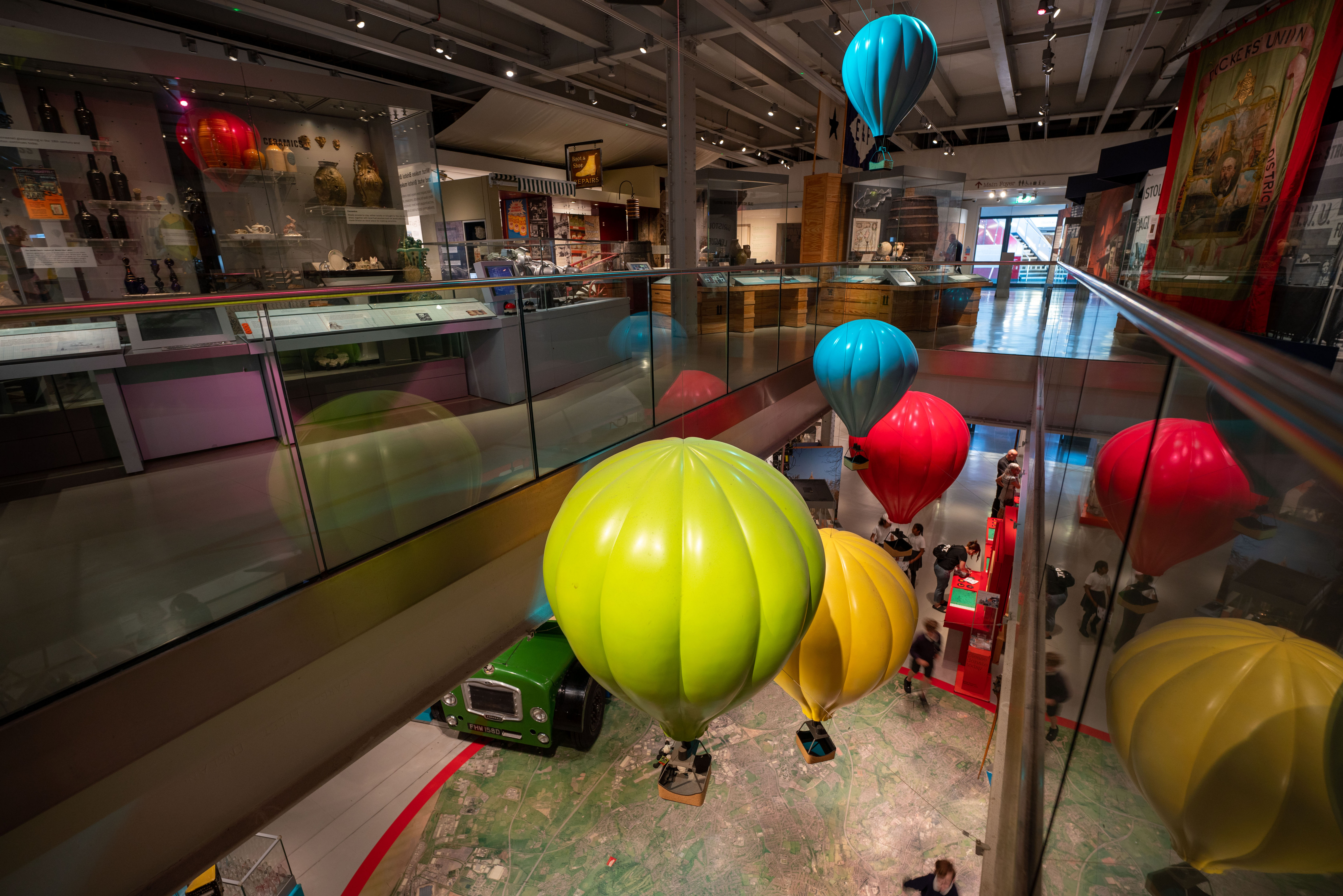





Lab results
We run a range of lab tests under controlled conditions, using the Imatest Master testing suite. Photos of test charts are taken across the range of apertures and zooms (where available), then analyzed for sharpness, distortion and chromatic aberrations.
We use Imatest SFR (spatial frequency response) charts and analysis software to plot lens resolution at the center of the image frame, corners and mid-point distances, across the range of aperture settings and, with zoom lenses, at four different focal lengths. The tests also measure distortion and color fringing (chromatic aberration).
Sharpness:
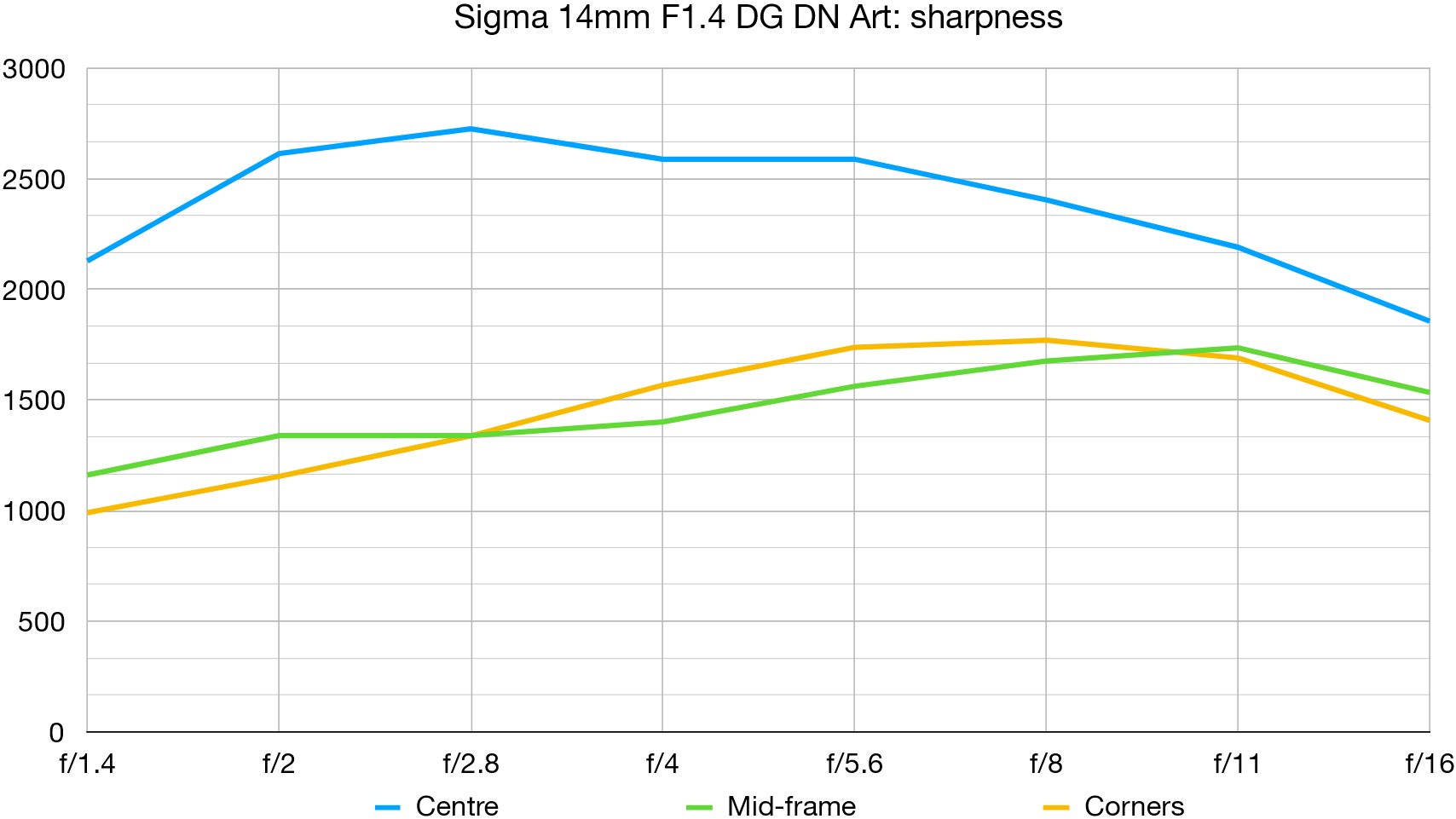
Levels of sharpness are thoroughly excellent across the whole frame, even when shooting wide-open at f/1.4. Edge-sharpness might not look overly impressive in our lab results but that’s more down to the necessity of having to shoot test charts at extremely close range, due to the extreme field of view of a 14mm lens.
Fringing:
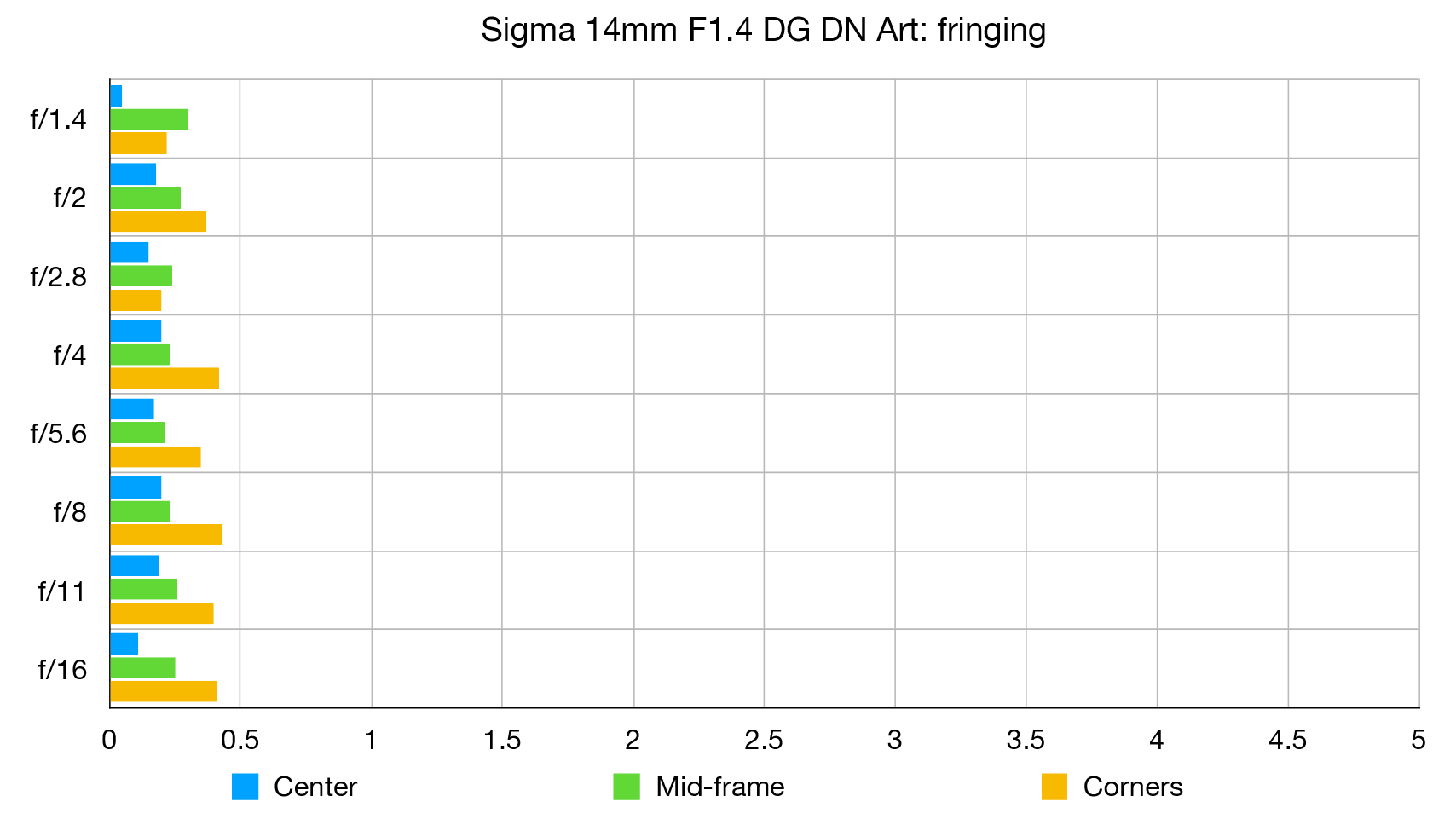
The Sigma does really well to keep both axial and lateral chromatic aberrations to absolutely negligible levels, LCA is virtually non-existent right out to the extreme edges and corners of the image frame, throughout the entire aperture range.
Distortion: -3.62
As with sharpness, close-range lab test results for distortion can make ultra-wide-angle lenses look worse than they really are. In real-world tests, we found the lens produced fairly modest barrel distortion and relied very much less on in-camera correction than many other recent lenses designed for mirrorless cameras.
Verdict
For astrophotography, you need a lens that sucks in much light as possible. As the world’s first ultra-wide-angle 14mm lens with an f/1.4 aperture, this Sigma delivers 58 per cent more light to the camera’s image sensor than an f/1.8 lens. Not just a one-trick pony, it’s also great for shooting landscapes, cityscapes and architectural interiors, giving fabulous image quality backed up by superb handling and excellent build quality. By necessity, it’s a bit of a beast, weighing in at more than a kilogram, but it’s well worth the weight if you feel the need for speed. And the price tag is surprisingly modest.
Read more:
• Best camera lenses to get
• Best Canon lenses
• Best Nikon lenses
• Best Sony lenses







